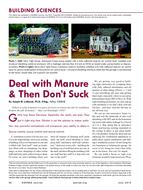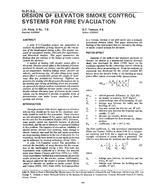Click here to purchase
A mass and energy balance (MEB) approach was implementedusing Engineering Equation Solver (EES) (Klein andAlvarado 2015) to estimate the annual energy performanceofasingle-duct variable-air-volume(VAV)system with fixedandvariable-airflow parallel fan-powered terminal units(FPTUs). Fans with both permanent-split capacitor motorscontrolled by silicon control rectifiers and electronicallycommutated motors (ECMs) were evaluated, along with theenergy impact of leakage. A comparison was also providedto variable- and fixed-airflow series FPTUs. Hourly zoneloads in a five-zone building were generated using Energy-Plus. The hourly zone loads and weather data were used asinput to a single-duct VAV system model using EES to estimatethe energy use for a five-zone building in five cities:Houston, TX; Phoenix, AZ; Chicago, IL; New York, NY; andSan Francisco, CA. The results showed less than 0.4% differencein energy use between the fixed-airflow ECM and PSCparallel FPTUs. Variable-airflow parallel units provided amaximum of 0.8% savings compared to the baseline fixedairflowparallel FPTU. Leakages of 5% and 10% in coolingmode were simulated for parallel FPTUs. Parallel units with5% leakage performed comparably to variable-airflowseries units. Increasing leakage to 10% negated any benefitthat a parallel unit had over the variable-airflow series unitsin all five cities.
Citation: 2019 Winter Conference, Atlanta, Ga, Technical Papers
Product Details
- Published:
- 2019
- Number of Pages:
- 15
- Units of Measure:
- Dual
- File Size:
- 1 file , 2.2 MB
- Product Code(s):
- D-AT-19-004


